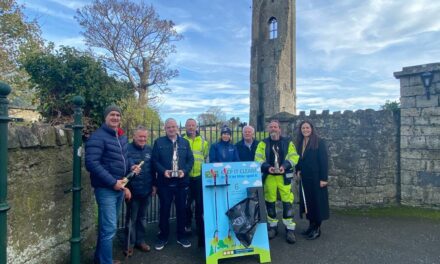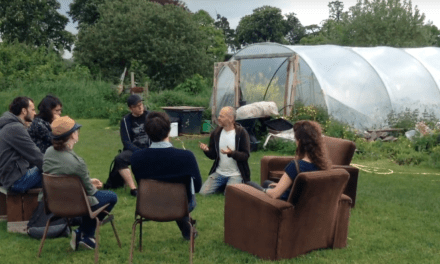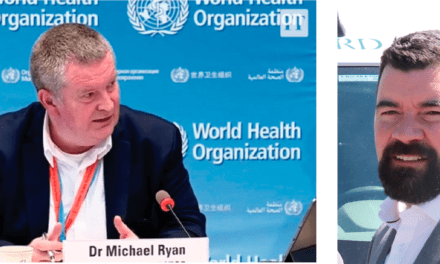– Clann Credo’s CEO Mary Lawlor tells the story of how Athlone Boat Club, after decades talking about it, found the money for a new clubhouse.
By Mary Lawlor
ATHLONE Boat Club recently hosted its first rowing regatta from their new state-of-the-art facility. While the Athlone rowers took home a haul of medals on the day, the new flood-proof and accessible building sparkled in the sunshine and probably was considered the overall winner.
Designed to house boats and equipment safely while meeting the needs of rowers of all abilities and ages, the club’s new headquarters, in front of Custume Barracks, offers superb views of the town from the banks of the Shannon.
Paul Donovan, club chairperson, said, “People were forever talking about a new club. The clubhouse we had was in a state of disrepair and was constantly flooding and parts of the club wall were leaning towards the River Shannon. What we have now is a state of the art community facility.”
The new club house stands a metre higher than the original building.
Athlone Boat Club had to overcome significant planning and logistical challenges to bring the new headquarters to fruition, including managing increasing costs and project overruns. As with other community projects across the country, Covid-19 was a disrupter – shovels were put down, meetings were postponed and it tested the group’s resolve.
“We had our fair share of challenges, including a real shock when we were told that we were getting a lower grant then we had expected and in the background costs were rising,” said Paul.
“Dealing with Clann Credo was key to this project. They were responsive to all of our requests and changes. I can’t imagine finishing the project without them.”
Having to manage increasing project costs and overruns is not unique to Athlone Boat Club – in fact they have managed a difficult situation exceptionally well.
At a recent webinar focusing on how community groups can best manage rising costs, Michael White, an engineer with Feasible Property Development said that a lack of detail at project design stage means a lack of clarity, which leads to price uncertainty.
Michael’s advice is to engage the right professional expertise, develop a detailed bill of quantities and give yourself extra time to think things through. (His tips are published below).

• Racing on the rivers of Ireland since 1837, Athlone Boat Club finally has a new clubhouse
Back in Athlone – despite all the development work and complexities which took the project over two years to complete, the rowing coaches somehow managed to stay focused. They recorded three Irish Championship wins last year, while two young rowers – Donagh Claffey and Martin O’Grady – represented Ireland in the 2021 World Rowing Junior Championships. Well done to Athlone Boat Club!
More information:
1 For more information on Athlone Boat Club: https://www.athloneboatclub.ie/ and https://www.facebook.com/athlonebc/
2 For more info on Clann Credo’s social finance for community groups: https://www.clanncredo.ie/
CAPITAL PROJECTS IN THE COMMUNITY
36 tips to manage rising project build costs
Michael White is an engineer and director of Feasible Property Ltd. He volunteers with Edmondstown Golf Club and Lakelands Football Club including helping with various capital development projects. In a recent Clann Credo webinar on managing increasing project costs, he advised:
- Identify a group/ sub-committee of members who will handle the project for your organisation
- Work out your requirements: What does project aim to achieve?
- Identify the professional expertise required – architects, etc.
- Prepare a realistic costing. (This is known in the business as the Order of Magnitude cost). For most projects this will require the input of a quantity surveyor or cost consultant.
- Identify your funding source(s).
- When the Order of Magnitude is prepared, examine the list of exclusions – development levies, utility connections, etc.
- Can your community group recover VAT (13.5% / 23%)?
Project Evaluation
- Identify the expertise required – eg architects.
- Identify a realistic timeframe. Projects always take longer than envisaged
- What statutory consents are required? eg Planning permission/ Fire Safety Certificate, Disability Access Certificate.
- An accurate budget can realistically only be prepared once the detailed design is complete. (±10%)
- Identify the procurement process. An agreed tender list is the most common option. No need for more than four to five companies to tender.
Commencing/During a project
- Agree on a list of tenderers – If they are unknown contact references for details of past projects
- Detailed specification needs to be tied down as much as possible prior to the issuing of tender documents. Extra weeks spent on this aspect are worthwhile.
- Lack of detail = Lack of clarity = Lack of price certainty.
- Input from your quantity surveyor – Requirement for a Bill of Quantities.
- Are modular forms (built off-site) of construction available?
- When tenders/ prices are returned from contractors, detailed analysis is required.
- Request the value of engineering proposals from contractor if necessary.
- Prior to appointment, agree on the programme and explain to the contractor the importance of adhering to the budget.
- Identify the Contract Type.
- Is a fixed price realistic?
- Your sub-committee’s involvement is critical. They need to regularly meet the architect and contractor.
- Ensure adequate contingency plans are included – generally a minimum of 10%.
- Update your cost plan/ budget regularly. The involvement of the quantity surveyor is critical.
- Identify a project lead and request they email a regular update to your group.
Close-Out
- Variations arise – What to do? Tackle them! Is there any way to offset the cost?
- Keep your funder informed. If there are any problems advise them.
- Pay monthly certificates on time. Any delay means the work on site may suffer. Don’t affect the outcome of your project!
- Final Account Stage – Tackle this early. Will you get any reduction for quick payment once the amount is agreed.
Project ONLY Partially Completed
- Variations have arisen – Tackle them.
- If you don’t already have a quantity surveyor consider approaching one.
- Govt. Analysis on Inflation – https://www.cso.ie/en/releasesandpublications/er/wpi/wholesalepriceindexjanuary2022/
- Unprecedented times so accurate and current awareness of the construction sector is required • What stage is your project at? Realistic timeframe to complete?
- Are there any elements that could be completed at a later stage?
- If you have a funding shortfall, identify the realistic figure to finish your project.
Watch the webinar:
To view the full ‘Managing Increasing Costs’ webinar: https://bit.ly/ClannCredoManageCosts2022-Webinar





